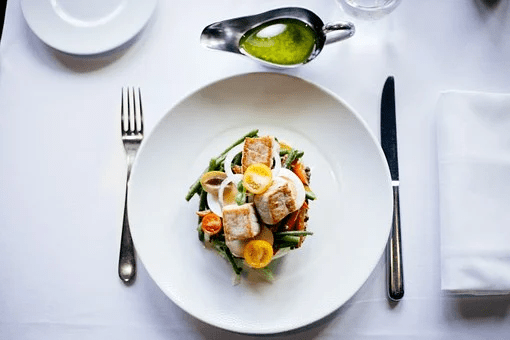A cuisine is a particular set of cooking customs and methods that are usually connected to a particular area or culture. Every cuisine involves preparing food and beverages. Cuisines are often called for the areas in which they originated. The main factors influencing a cuisine are the ingredients that can be obtained locally or through commerce. Religious prohibitions on food can also have a significant impact on these kinds of culinary customs.
GLOBAL CUISINE
One kind of food that is eaten all across the world is called global cuisine. A cuisine is a distinctive set of cooking customs and methods that are frequently connected to a particular area, nation, or culture. A local, regional, or national cuisine needs to spread abroad and have its food offered all over the world in order to become a global cuisine. Food production, transportation, storage, and preservation have all made significant strides in the 20th century, and as a result, many nations, towns, and regions now have access to a vast array of foreign foods in addition to their own cuisines.
REGIONAL CUISINE
Local, state, or national regions serve as the basis for regional cuisine. Different temperatures, culinary customs and practices, food availability and trade, and cultural distinctions can all influence regional cuisines. A notable definition that draws from traditional food is as follows: A traditional cuisine can be defined as a cohesive culinary tradition that develops over time in the daily lives and kitchens of a people in a particular country or region and that, when localized, differs noticeably from the national cuisine.
Chinese Cuisine
Chinese food reflects the wide-ranging geography and rich cultural diversity of the nation. The colors, textures, and flavors all work in unison. Chinese cooks provide food that demonstrates their mastery of balance in every recipe. Chinese food caters to a broad range of palates, with meals ranging from hot Sichuan specialties to elegant dim sum. In Chinese cookery, staple ingredients include rice vinegar, soy sauce, ginger, and garlic.
Japanese Cuisine
Japanese food is a living example of the elegance of focus and simplicity. It’s a cuisine where the chef’s talent and the quality of the ingredients are highly valued. Tempura, sashimi, and sushi are just a few instances of how the Japanese turn uncooked ingredients into culinary masterpieces. Japanese cooking likewise values aesthetics highly. Every dish in a traditional kaiseki lunch is carefully crafted to appeal to both the palate and the sight, making them a visual feast.
Spanish Cuisine
Spanish cuisine is often associated with festivities and friendliness. The famous Spanish meal paella is a colorful combination of seafood, vegetables, and rice that has been infused with saffron. Small dishes of different appetizers called tapas encourage guests to sample a variety of flavors during a single dinner.
Italian Cuisine
Italian cuisine has a long history. Recipes are typically handed down through the generations with an emphasis on seasonal, fresh produce. Italian kitchens are not complete without olive oil, garlic, and basil, which add flavor to a plethora of recipes.
ETHNIC CUISINE
The social, cultural, and geographic context in which a cuisine is found determines what constitutes “ethnic food.” In general, those outside of the various ethnic groups identify ethnic meals as cuisines that have their roots in the history and culture of certain ethnic communities. Foods like Chinese, Mexican, Italian, and so on are only categorized as ethnic when they are consumed outside of their own nations.
The term “ethnic food” has been used to refer to a broad range of cuisines, almost anything that the general public associates with a foreign origin or a minority community in the United States. Therefore, it wouldn’t be suitable to describe most foreign food consumed abroad, fusion food made by a creative chef, or Italian food served by Greek restaurateurs.
CITY CUISINE
When it comes to how moving to the city alters our perspectives on food, it may be likened to a seismic event. This falls under the umbrella term of the “nutritional transition. “Street food vendors, workplace or school cafeterias, and daycare centers are becoming the places where families have at least one, if not many, meals a day. As a result, nutritional quality and balance, which were formerly “intuitive” at the home level, are now influenced by broader cultural shifts and outside forces.
CUISINE OF MEXICO CITY
There is a wide variety of gastronomic experiences available in Mexico City. In addition to some internationally acclaimed restaurants, the city is home to eateries that specialize on the distinct cuisines of Mexico’s 31 states.
